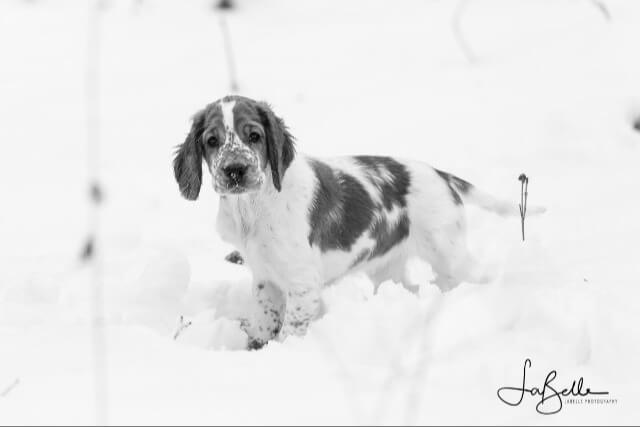
Judging the Welsh Springer Spaniel
Guidelines for judging the Welsh Springer Spaniel, focusing on function, temperament, movement, and breed standard essentials
Home » Meet The Breeds » Welsh Springer Spaniel
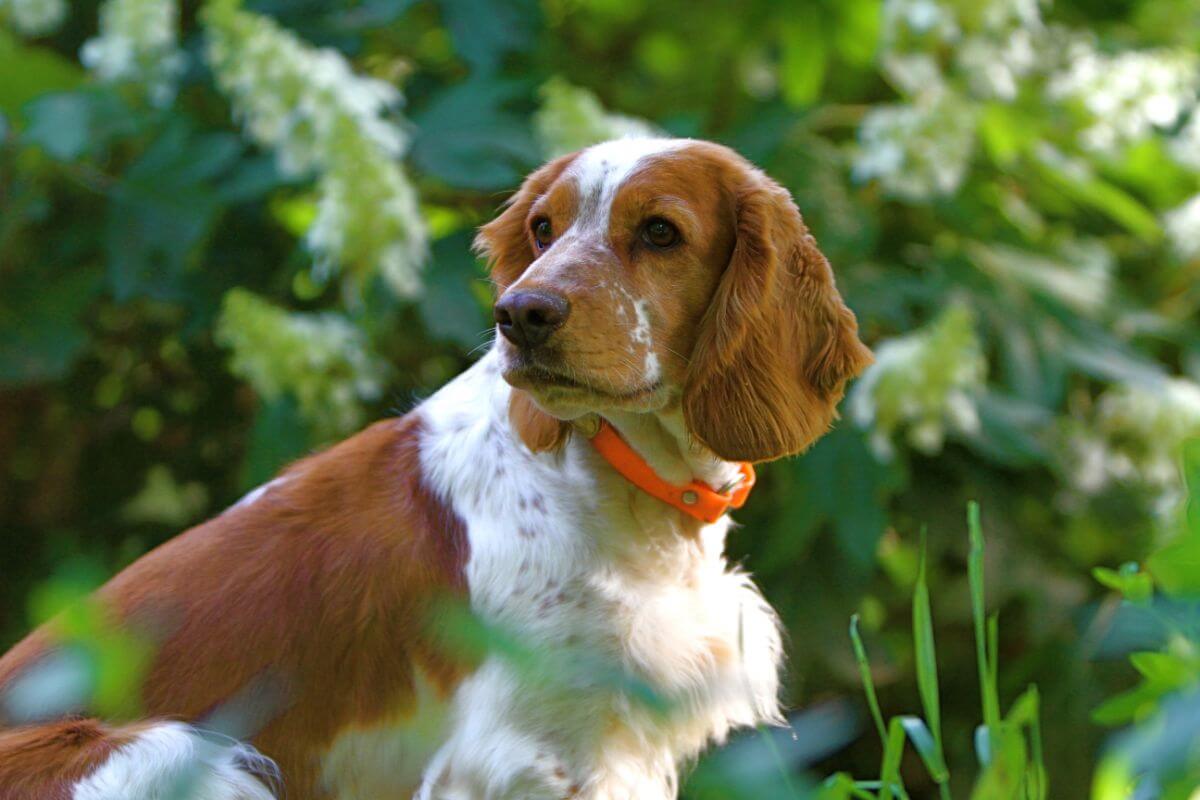
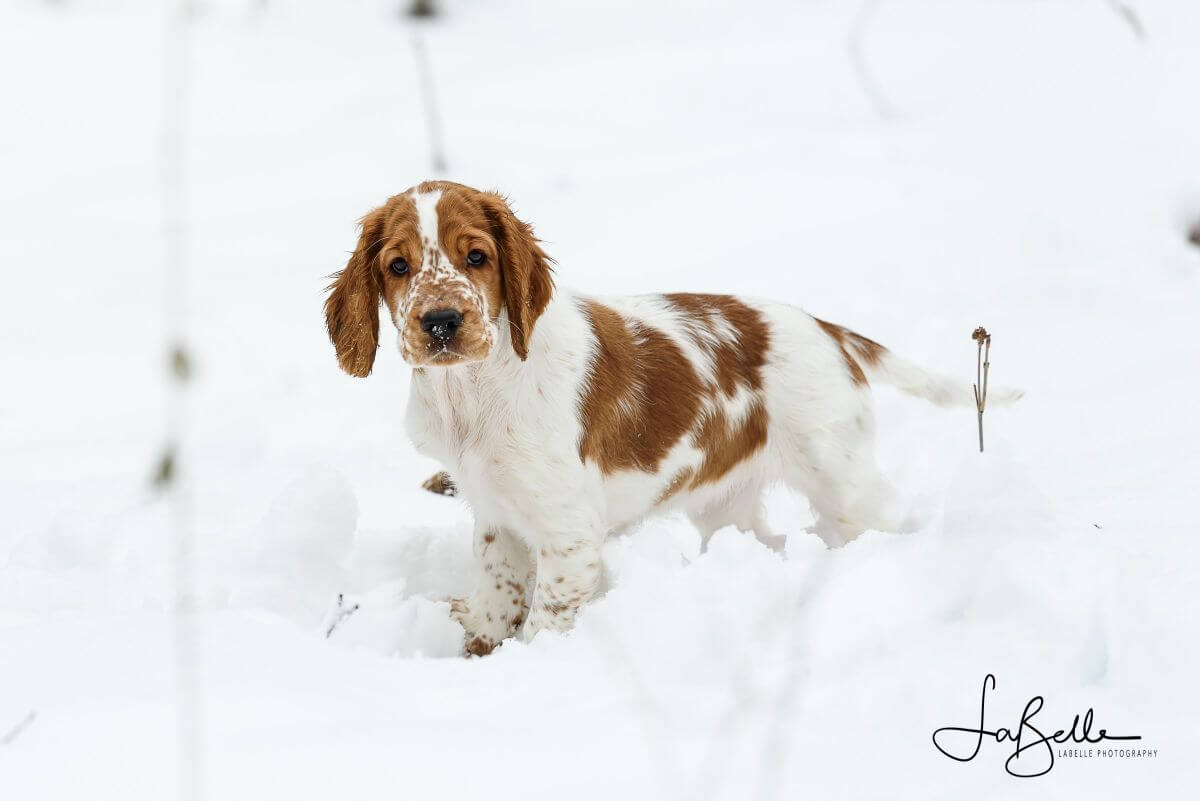


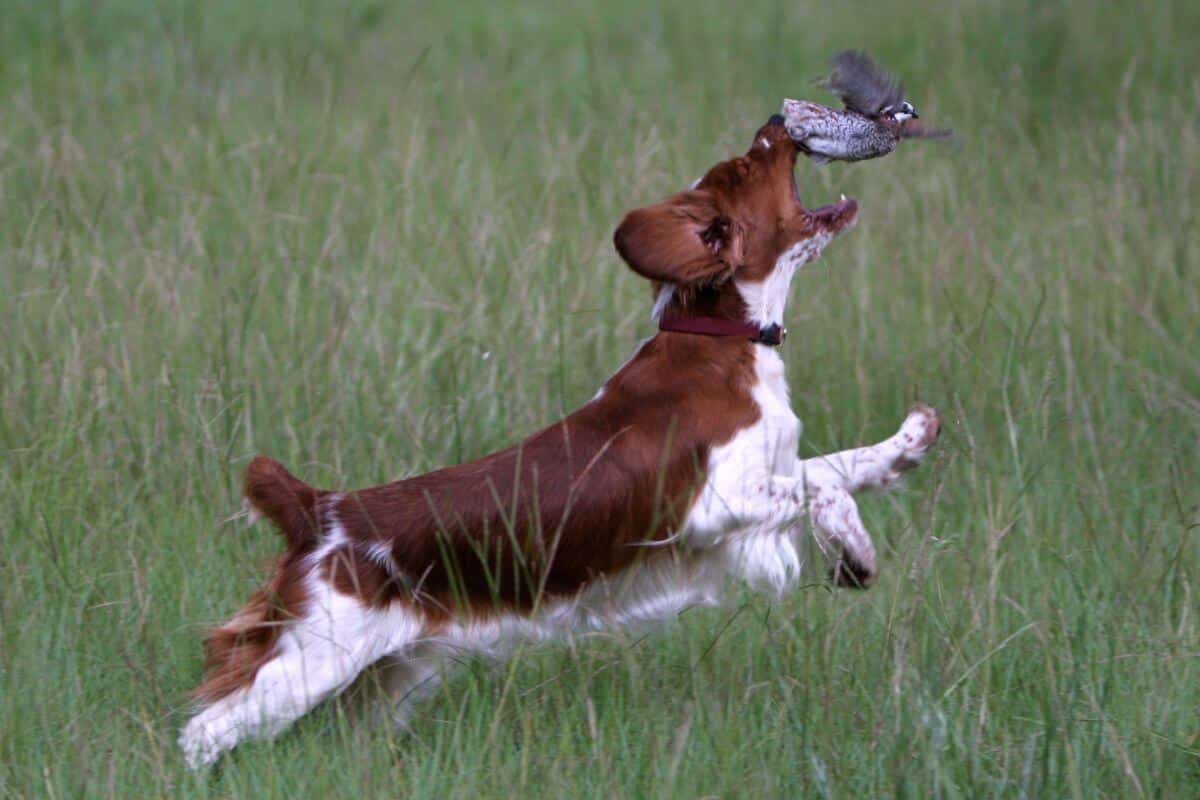
The Welsh Springer Spaniel is a medium-sized flushing spaniel known for its loyal and affectionate nature. Originating in Wales, this versatile dog excels as both a hunting companion and a cherished member of the family. With its striking red and white coat, and boundless enthusiasm, the Welsh Springer is a breed that effortlessly combines beauty and utility, thriving in active households and outdoor settings.
Sporting
17 – 19 inches
35 – 55 pounds
12 – 15 years
| Country of Origin | Wales |
|---|---|
| Bred For | Upland Bird Hunting |
| Known For | Devotion, Flushing Birds, Red & White Coat |
| Popularity | Moderate |
| Temperament | Active, Affectionate, Loyal |
| Activities | Hiking, Hunting, Conformation Shows, Dog Sports |
The Welsh Springer Spaniel has a rich history rooted in the rugged landscapes of Wales, where its ancestors were prized as versatile hunting dogs. The breed is believed to share a common lineage with other spaniel breeds, tracing back to ancient Roman or Celtic dogs brought to the British Isles. While early records mention generic “spaniels,” by the 16th century, Welsh farmers and hunters were refining a distinctive red and white variety that would become the breed as it is known today.
Acknowledged for its ability to “spring” gamebirds from dense underbrush, the early dogs were invaluable at a time when hunting was both a necessity and a sport. The Welsh Springer’s strong work ethic, keen nose, and agility made these dogs exceptional hunters in the field. Unlike their English counterparts, the Welsh dogs were bred to navigate the challenging terrain of Wales, developing a somewhat rectangular frame that proved ideal for working in brambles and rocky hillsides.
During the 19th century, the Welsh Springer’s popularity grew beyond its native region. It was showcased at early dog shows in the United Kingdom, where its unique red and white coat set it apart from other spaniels. This distinct appearance led to its classification as a separate breed by The Kennel Club (UK) in 1902.
The Welsh Springer Spaniel faced a decline in numbers during World War I and World War II, when resources were scarce and dog breeding took a backseat to wartime priorities. However, dedicated breeders worked diligently to preserve the breed, ensuring its survival and re-establishment in the post-war years.
In the United States, the Welsh Springer Spaniel was recognized by the American Kennel Club (AKC) in 1906. Although the breed has never achieved widespread fame in this country like the English Springer or Cocker Spaniels, it has carved out a niche among dedicated enthusiasts who value its steady temperament and all-around versatility.
Male Welsh Springer Spaniels typically stand between 18 and 19 inches tall at the shoulder, while females measure slightly less, ranging from 17 to 18 inches. Males generally weigh between 40 and 55 pounds, with females being somewhat lighter, averaging 35 to 50 pounds.
The Welsh Springer Spaniel is slightly longer than it is tall, maintaining a symmetrical and compact frame. The breed’s bone structure is moderate, providing a sturdy foundation suitable for work in the field. Its substance reflects strength and endurance without appearing heavy or coarse.
Texture: The Welsh Springer Spaniel’s coat is soft and silky to the touch, lying flat against the body with a slight wave permitted. The coat is weather-resistant, offering protection during fieldwork in various conditions. Feathering is moderate on the chest, legs, and tail, contributing to the breed’s elegant appearance without being excessive.
| Standard Color | |
|---|---|
| Red & White | y |
| Standard Marking | |
|---|---|
| Any Pattern | y |
| Ticking | y |
A Note About Color: The Welsh Springer Spaniel is exclusively a red and white dog. The red is a rich color and may appear in any pattern, and any white area may be flecked with red ticking.
The tail of the Welsh Springer Spaniel is traditionally docked but may also be left at its natural length. It is carried near the horizontal or slightly elevated, and displays a lively action. The tail is well-feathered when undocked.
The Welsh Springer Spaniel is a loving and versatile dog that thrives in active households. The breed’s loyal and eager-to-please nature makes these dogs an excellent choice as a canine companion. However, prospective owners should be mindful of the breed’s exercise requirements and its need to be an active partner in daily activities.
The Welsh Springer Spaniel is generally a healthy breed with a lifespan of 12 to 15 years. Regular veterinary check-ups and preventative care are crucial for maintaining good health and an overall sense of well-being.
Like all dogs, the Welsh Springer may be prone to certain health issues. These may include:
The Welsh Springer Spaniel is an affectionate and devoted breed that thrives on forming close bonds with its family members. These dogs are eager to please and relatively easy to train, making them particularly well-suitable for novice owners. However, they may not tolerate being left alone for long periods, as they are sensitive and can develop anxiety or destructive behaviors.
Welsh Springers are typically gentle with children and get along well with other dogs when socialized early on. Their initial reserve with strangers often gives way to friendliness as they warm up, and their alert nature makes them effective watchdogs without being overly assertive. These characteristics can make them excellent companions in active and attentive households.
Welsh Springer Spaniels require a high-quality, balanced diet for maintaining energy levels and overall good health. Puppies benefit from specially formulated puppy food, fed in three or four small meals daily to support growth and digestion. Adults typically thrive on two well-portioned meals a day, with a total daily intake of 1.5 to 2.5 cups of dry food, adjusted for their size, activity level, and metabolism.
Fresh water should always be available, and care should be taken to prevent overfeeding, as the breed can be prone to weight gain. Regular consultations with the dog’s breeder and veterinarian can help to determine the best feeding schedule and portion sizes.
Welsh Springer Spaniels are certainly trainable, thanks to the breed’s intelligence and eagerness to please. Their cooperative nature makes them well-suited for basic obedience training and participation in many dog sports. Positive reinforcement methods, such as treats and praise, are most effective with this sensitive breed. Of course, early socialization is key.
While they are not excessive barkers, Welsh Springers may vocalize when excited or alert, a behavior that can be managed with consistent training. With proper guidance and engagement, they can excel in activities like Obedience and Agility Trials. The breed’s natural curiosity, however, makes recall training essential, especially in unfenced areas..
The Welsh Springer Spaniel is an active breed with high energy levels, requiring at least one to two hours of daily exercise. Activities like brisk walks, hiking, swimming, and off-leash play in a secure area help to satisfy their physical needs and emotional needs.
| Energy Level | High |
|---|---|
| Exercise Requirements | 2 Hours/Day (Minimum), Daily Walks, Daily Exercise, Playing with Other Dogs, Agility |
They also enjoy mentally stimulating games, such as fetch or scent-based tasks that will engage their hunting instincts. Regular exercise of any kind is essential to prevent boredom and support overall good health.
The Welsh Springer Spaniel’s silky, medium-length coat requires weekly brushing to prevent tangles and manage coat loss. During seasonal shedding periods, more frequent grooming may be needed to keep the coat in top condition.
| Coat Type | Flat, Soft, Lightly Feathered |
|---|---|
| Grooming Requirements | Weekly Brushing, Occasional Bathing, Routine Ear Cleaning, Periodic Nail Trimming, Regular Tooth Brushing |
Bathing is necessary only occasionally, as the breed’s coat naturally repels dirt. Routine ear cleaning is important to prevent infections that are common in breeds with hanging ears. Regular nail trimming and dental care complete the weekly grooming regimen.
The Welsh Springer Spaniel adapts well to different living environments, provided its exercise needs are met. These dogs can thrive in apartments or houses with yards, as long as they have daily opportunities to run and play.
This Welsh Springer prefers moderate climates, handling cool weather better than extreme heat. During hot weather, care should be taken to prevent overheating, especially during periods of exercise. These dogs are happiest when included in family activities, making them ideal companions for households that can provide the time and attention they need.
Welsh Springer Spaniel puppies are adorable, energetic, and curious, with a natural urge to explore. They are quick learners and thrive in environments where they are exposed to consistent training and socialization from an early age. These puppies require patience and a loving but structured approach to help them along as they grow.
To thrive, the Welsh Springer Spaniel puppy requires proper nutrition, early training, and thoughtful socialization. Feeding should include high-quality puppy food divided into three to four small meals a day to support growth and digestion, with fresh water always available.
Socialization is crucial during the early months of life. Exposing the puppy to new environments, people, and animals will help to build confidence. And basic training, including house training and crate training, should start early, using positive reinforcement to encourage good behavior.
Veterinary check-ups, vaccinations, and grooming habits, like brushing and nail trimming, should also be introduced early to ensure a puppy that grows up to become a healthy and well-adjusted adult.
The Welsh Springer Spaniel is recognized by the world’s leading registries and kennel organizations, which categorize the breed into a specific Group based on its unique characteristics. This breed is recognized worldwide under the following Group designations:
| Organization | Group Designation |
|---|---|
| AKC (American Kennel Club) | Sporting |
| UKC (United Kennel Club) | Gun Dog |
| CKC (Canadian Kennel Club) | Sporting Dogs |
| ANKC (Australian National Kennel Council) | Gundogs |
| RKC (The Royal Kennel Club) | Gundog |
| FCI (Fédération Cynologique Internationale) | Group 8 – Retrievers-Flushing Dogs-Water Dogs; Section 2 – Flushing Dogs |
The ideal Welsh Springer Spaniel is described by a Breed Standard that is approved by each of the world’s leading registries and kennel organizations. The Breed Standards for this breed may be found in the following links:
| Organization | Breed Standard |
|---|---|
| American Kennel Club | AKC Welsh Springer Spaniel Breed Standard |
| United Kennel Club | UKC Welsh Springer Spaniel Breed Standard |
| Canadian Kennel Club | CKC Welsh Springer Spaniel Breed Standard |
| Australian National Kennel Council | ANKC Welsh Springer Spaniel Breed Standard |
| The Royal Kennel Club | RKC Welsh Springer Spaniel Breed Standard |
| Fédération Cynologique Internationale | FCI Welsh Springer Spaniel Breed Standard |
Welsh Springer Spaniel rescue efforts help dogs in need by providing medical care as well as fostering and adoption services. These initiatives aim to rehome abandoned, surrendered, or neglected dogs with loving families who can meet their needs.
Yes, Welsh Springer Spaniels shed moderately throughout the year, with heavier shedding during seasonal changes. Regular brushing helps to manage loose hair and keeps the coat in good condition.
No, Welsh Springer Spaniels are not hypoallergenic. Their shedding and dander can trigger allergies in sensitive individuals.
Welsh Springer Spaniels typically live between 12 and 15 years. With proper care, including a healthy diet and regular vet check-ups, they can enjoy a long, active life.
Yes, Welsh Springer Spaniels are wonderful family dogs, known for their affectionate and gentle nature. They thrive in homes where they are included in outdoor activities and are particularly good with children.
Welsh Springer Spaniels are not excessive barkers, but they are alert and will vocalize to announce visitors or alert to unusual sounds. Early training and socialization can help to keep barking under control.

Guidelines for judging the Welsh Springer Spaniel, focusing on function, temperament, movement, and breed standard essentials

Uncover the unique outline of the Welsh Springer Spaniel breed and its importance in judging. Explore proportions, markings, and more.
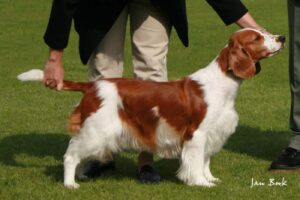
How a Breeder Judge Evaluates Welsh Springer Spaniels : In my experience, the best way to become truly familiar with is to speak with longtime
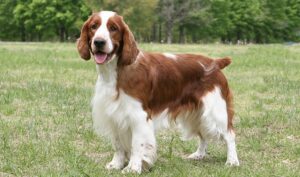
Judging the Welsh Springer Spaniel and any breed for that matter in my experience requires you to get to know the breed by speaking with longtime breeders.

Doug Johnson of Clussexx Kennel breeds top Spaniels and Kooikers with a focus on health, type, and predictability since 1984.

Kit Goodrich shares 47 years of passion for Welsh Springer Spaniels, from breeding and showing to preserving the breed’s purpose and form.

Doug Johnson on 40 years of breeding and judging English Toy, Clumber, Sussex, Welsh Springer Spaniels, and Kooikerhondje.

Sharon Sherwood is the breeder behind Painted Sky Farms Welsh Springer Spaniels. Read about the kennel’s beginnings, puppies, and much more!

Sandra Holmes is the breeder behind Trystyn Welsh Springer Spaniels. Read about the kennel’s beginnings, the sires, the dams, and more!
The best way to ensure a long and happy relationship with a purebred dog is to purchase one from a responsible breeder. Not sure where to begin?
Contact the National Parent Club’s Breeder Referral Program, which is listed on the AKC Breeder Referral Contacts page.
